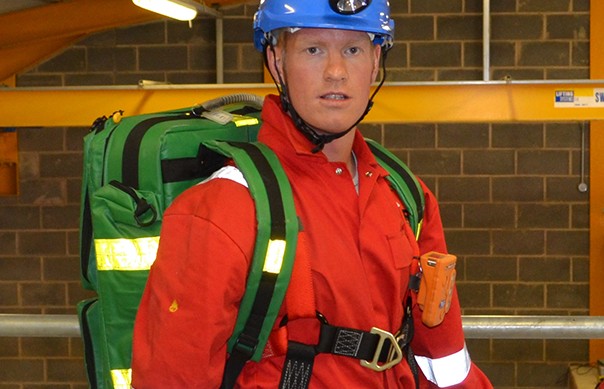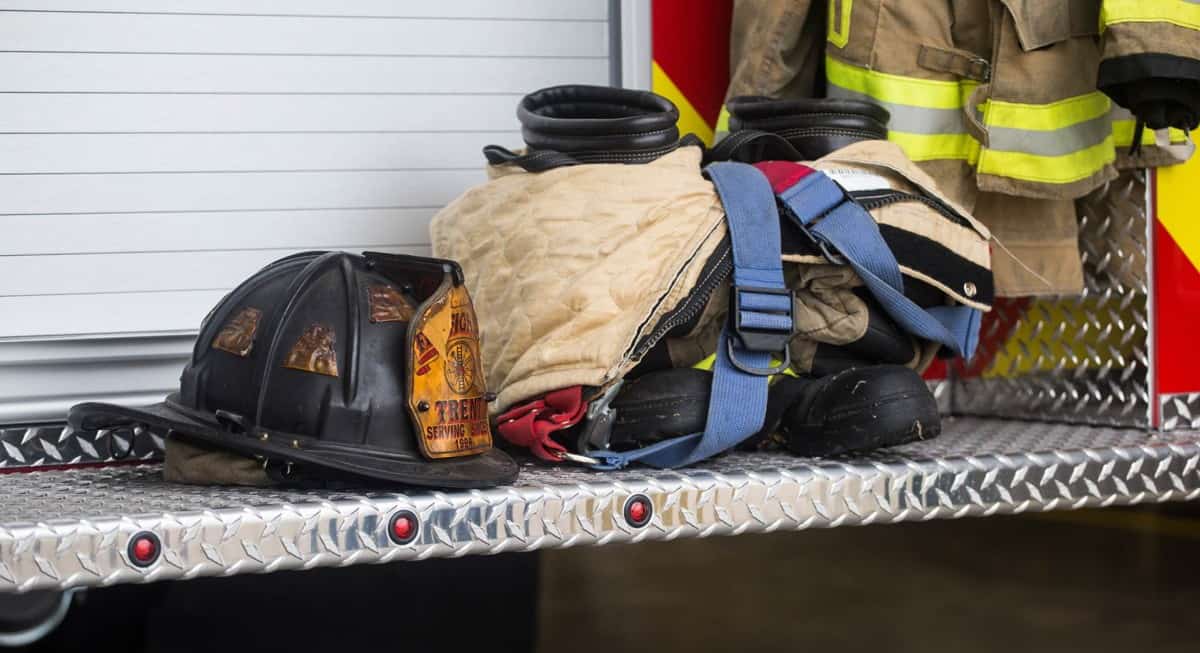Urban Search and Rescue Team, USAR. The Special Forces of the fire Service.
In the realm of firefighting and emergency response, few roles are as challenging and vital as that of an Urban Search and Rescue (USAR) team member. USAR teams are highly trained professionals venture into the heart of disaster zones, bringing equipment and training that is designed to handle the challenges when responding to the worst possible natural and man made disasters.
During my career I had the opportunity to see several of our firefighters join Task force 1 based out of Colorado. These men and women when through a long training period to become a team member.
Colorado USAR Task Force 1, also known as CO-TF1, is a highly skilled Urban Search and Rescue team based in Colorado. This team is one of the 28 federal urban search and rescue teams managed by the Federal Emergency Management Agency (FEMA).
Understanding Urban Search and Rescue Teams
Urban Search and Rescue teams are specialized units within the fire service that are deployed to respond to complex rescue scenarios in urban environments. These scenarios often involve the aftermath of natural disasters, structural collapses, terrorist attacks, or other catastrophic incidents.
The primary objective of USAR teams is to locate, extricate, and provide medical care to survivors trapped in compromised structures or hazardous environments.
There are basically two types, or levels of USAR teams. These teams are classified into two main types: Type 1 and Type 2 teams. These classifications are based on their capabilities, resources, and operational readiness. Understanding the distinctions between these teams is crucial when considering a career in USAR.
Type 1 Urban Search and Rescue Teams
Type 1 USAR teams, also known as Heavy Rescue Teams, have the highest level of USAR response. They are designed to handle the most complex and large-scale incidents. Colorado Task Force 1 is an example of a type 1 team.
These teams have robust operational capacity, specialized equipment, and highly trained personnel. They can deploy to national and international disasters and are capable of sustained operations for an extended period. Type 1 teams are typically staffed with experts in various disciplines, including structural engineers, hazardous materials specialists, medical professionals, and technical rescue specialists.
Type 2 Urban Search and Rescue Teams
Type 2 USAR teams, also referred to as Medium Rescue Teams, have a more regional focus and can respond to localized incidents. These teams possess a significant level of technical expertise and resources but may not have the same extensive capabilities as Type 1 teams.
Type 2 teams often collaborate with other agencies, such as local fire departments, law enforcement, and emergency management, to provide effective disaster response within their designated region. They are adept at conducting search and rescue operations, performing basic structural assessments, and providing medical care to survivors.
The designations of Type 1 and Type 2 teams serve as benchmarks for preparedness and response capabilities. These classifications help emergency management agencies, incident commanders, and jurisdictions to determine the appropriate level of assistance required during large-scale disasters or incidents.
During a disaster, Incident Command may request specific types of USAR teams based on the scope and complexity of the situation. Type 1 teams are typically deployed for major incidents where the resources and expertise of a larger team are necessary. Type 2 teams, on the other hand, are deployed for localized incidents or as support to Type 1 teams.

Texas Task Force 1 Urban Search and Rescue Trained for ground, water, and air missions throughout Texas and the nation, Texas Task Force 1 serves as the state’s primary search and rescue team and as one of twenty-eight federal teams in the national urban search and rescue system. Founded in 1997, this elite team has been dispatched for state and national emergencies, probing the devastation at Ground Zero and saving lives on the Gulf Coast in the aftermath of Hurricane Katrina.
The Components of an Urban Search and Rescue Team
USAR teams typically comprise various professionals, each bringing their unique skills and expertise to the table. These teams consist of firefighters, paramedics, engineers, search and rescue specialists, medical personnel, canine handlers, and logistical support staff. This diverse combination allows for a comprehensive approach to rescue operations, ensuring that every aspect of a complex scenario is addressed efficiently and effectively.
Specialized Equipment and Techniques
To undertake their demanding missions, USAR teams are equipped with specialized tools and cutting-edge technology. These resources include heavy lifting equipment, hydraulic rescue tools, shoring systems, search cameras, communication devices, and personal protective equipment. Additionally, USAR members are extensively trained in advanced techniques such as confined space rescue, high-angle rescue, trench rescue, and structural collapse rescue. This extensive training prepares them to navigate hazardous environments and make swift decisions under high-pressure situations.
The Path to Becoming an Urban Search and Rescue Team Member
Becoming a USAR team member requires a solid foundation in firefighting and emergency medical services. Start by pursuing a high school diploma or its equivalent, followed by enrolling in a firefighting academy or technical school. Acquire the necessary certifications, such as Firefighter I and II, Hazardous Materials Awareness and Operations, and Emergency Medical Technician (EMT). These credentials lay the groundwork for a successful career in firefighting and provide a steppingstone toward joining a USAR team.
After completing the initial training, gaining hands-on experience in the field is crucial. Joining a fire department as a firefighter will provide valuable exposure to various emergency situations and honing essential skills. Click here to find resources for find careers in the fire service. Additionally, consider pursuing specialized certifications related to urban search and rescue, such as Technical Rescue Technician or Confined Space Rescue Technician. These certifications demonstrate your commitment and expertise in specific areas of USAR operations, making you a more competitive candidate.
To become a member of an Urban Search and Rescue team, advanced training is essential. Many fire departments offer specialized training programs or host regional USAR training academies. These programs provide comprehensive instruction on complex rescue techniques, incident management, structural collapse, and the use of specialized equipment. Additionally, it is beneficial to attend workshops, conferences, and seminars related to urban search and rescue to stay up to date with the latest developments in the field.
Being part of an Urban Search and Rescue team demands physical strength, stamina, and mental resilience. Engage in regular physical fitness activities, focusing on strength, endurance, and flexibility. Participate in simulated rescue scenarios, challenging yourself both physically and mentally. Additionally, cultivate effective communication and teamwork skills, as collaboration and coordination are critical during rescue operations. Strengthen your problem-solving abilities and decision-making skills to thrive in high-pressure situations. Remember, USAR operations often involve working in hazardous environments, unpredictable conditions, and emotionally challenging circumstances, so developing mental fortitude is paramount.
While waiting for employment opportunities, consider volunteering with local search and rescue organizations or emergency management agencies. These experiences provide invaluable exposure to rescue operations, build your skills, and allow you to network with professionals in the field. Networking can lead to mentorship opportunities, recommendations, or even potential job openings. Actively engage with other USAR team members, attend industry conferences, and participate in training exercises to expand your professional network.
Urban Search and Rescue teams are the backbone of emergency response in complex disaster scenarios. Their unwavering dedication, specialized training, and commitment to saving lives make them an indispensable asset in any urban environment. To become a USAR team member, aspiring individuals must invest in education, training, and experience within the firefighting and emergency response field. Obtaining relevant certifications, gaining hands-on experience, pursuing advanced training, and nurturing physical fitness and mental resilience are key steps in joining this elite force. Remember, becoming an Urban Search and Rescue team member is a journey that requires passion, perseverance, and a genuine desire to serve and protect the communities we call home.
Good luck to you in your career as a firefighter. Always keep learning and strive for excellence in your training. As always feel free to contact us with requests on other topics you would like to see us cover here on Firefighter Conncection.com.

Pride and Ownership holds no punches. Chief Rick Lasky takes a hard look at the fire service and finds it short on the only element that makes it effective: passion. Chief Lasky gives an upfront and honest criticism about the need to reignite the love of the job on every level, from chiefs on down.


